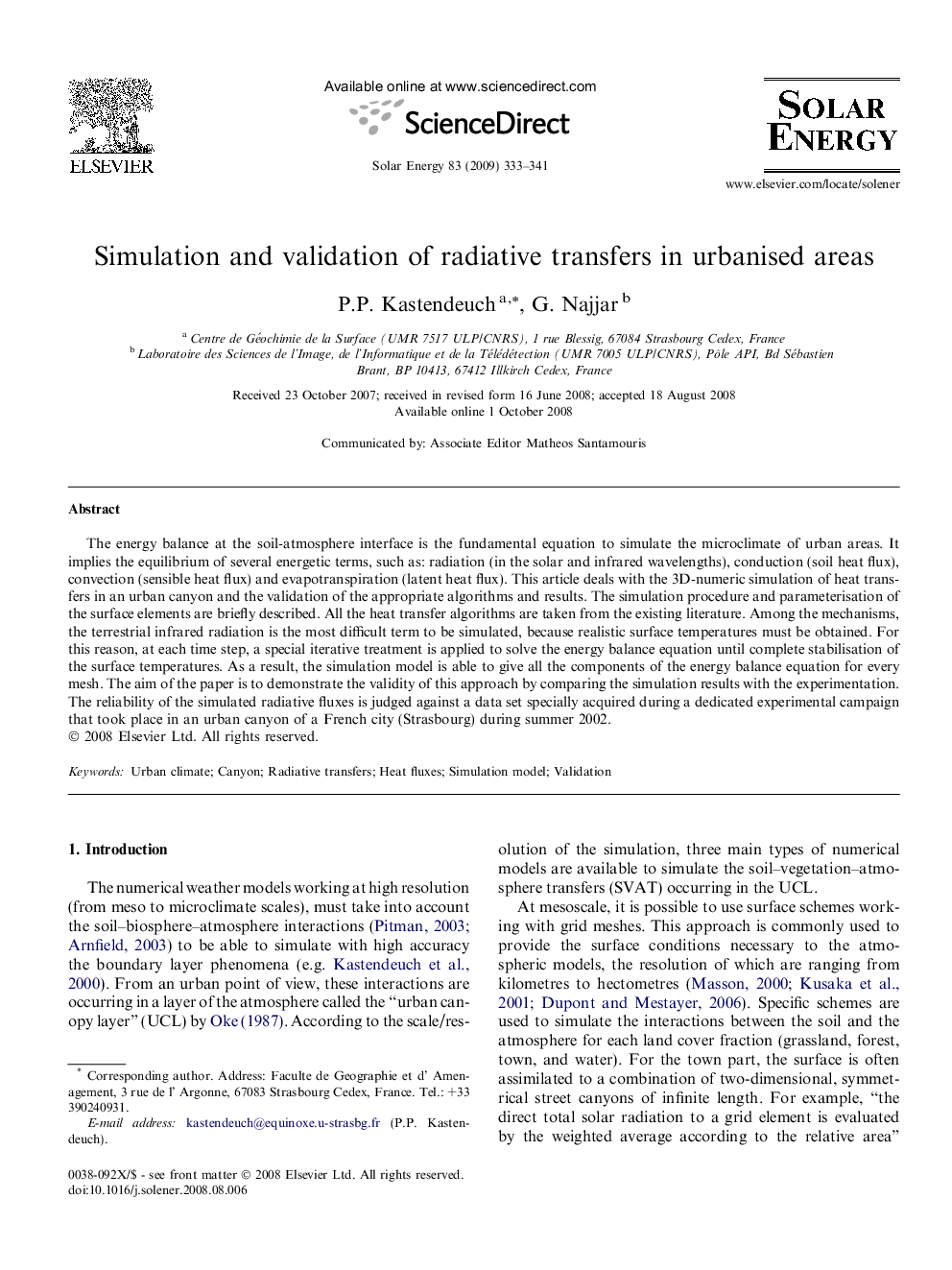| Article ID | Journal | Published Year | Pages | File Type |
|---|---|---|---|---|
| 1551951 | Solar Energy | 2009 | 9 Pages |
The energy balance at the soil-atmosphere interface is the fundamental equation to simulate the microclimate of urban areas. It implies the equilibrium of several energetic terms, such as: radiation (in the solar and infrared wavelengths), conduction (soil heat flux), convection (sensible heat flux) and evapotranspiration (latent heat flux). This article deals with the 3D-numeric simulation of heat transfers in an urban canyon and the validation of the appropriate algorithms and results. The simulation procedure and parameterisation of the surface elements are briefly described. All the heat transfer algorithms are taken from the existing literature. Among the mechanisms, the terrestrial infrared radiation is the most difficult term to be simulated, because realistic surface temperatures must be obtained. For this reason, at each time step, a special iterative treatment is applied to solve the energy balance equation until complete stabilisation of the surface temperatures. As a result, the simulation model is able to give all the components of the energy balance equation for every mesh. The aim of the paper is to demonstrate the validity of this approach by comparing the simulation results with the experimentation. The reliability of the simulated radiative fluxes is judged against a data set specially acquired during a dedicated experimental campaign that took place in an urban canyon of a French city (Strasbourg) during summer 2002.
